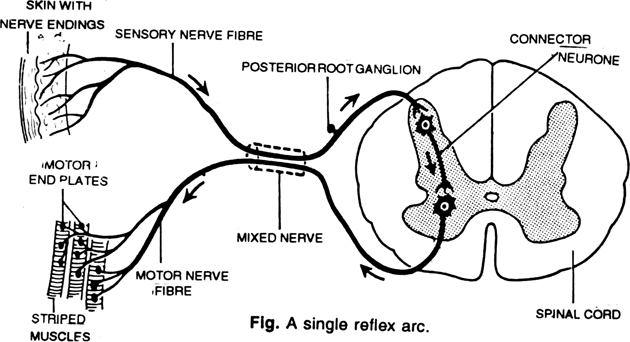 Short Answer Type
Short Answer Type Long Answer Type
Long Answer TypeDiscuss the mechanism of reflex action.
The reflex action follows a definite path which is in the form of an arc and this path is called reflex path.
The mechansim of reflex action can be described in following steps :
1. Reception of stimulus : The receptor organs (sensory organs) receive the stimulus and they transfer it to afferent nerve fibres.
2. Conduction of stimulus : The afferent nerve fibres conduct the stimulus to grey matter of spinal cord.
3. Conversion of stimulus into order : In grey matter of spinal cord, stimulus is converted into order by neurons.
4. Conduction of order : The order is carried by efferent nerve fibres to effectors (muscles).
5. Action of muscles : The muscles or effectors after receiving the order act accordingly.

 Short Answer Type
Short Answer Type